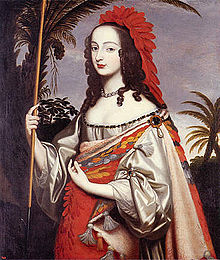Electress Sophia of Hanover
(1630-1714)
BY CAROLINA PINHEIRO
Because some people (especially those who do not live in the U.K) may become curious about the laws of succession after reading the article Heiress apparent, I decided to do this small summary about what these laws state and their history.
A few aspects govern the succession to the British throne. The succession to the British throne is governed by descendant, that is, only members of the royal family can become kings or queen; by common law; and by Parliamentary statute.
Common Law is the legal precedent that origins in court, by judges sitting in court. It differs from the statutory provision because is constantly changing. According to common law, the line to the throne is organized by male-preference primogeniture, that is, the succession passes first to the monarch son’s, in order of birth, and then to his or her daughters, in order of birth as well.
The laws that govern succession are in the Bill of Rights (1689) and in the Act of Settlement (1701). Before these documents there was not any official law regulating succession. The Bill of Rights was an Act of the British Parliament passed on 16 December 1689. It was passed to regulate much of succession when Mary II and her husband William II were invited to the throne after James II fled the country, what the Parliament considered abdication and others rights of the English people. However, the Bill of rights stated that the succession belonged to Queen Mary II descendants, to William III descendants (born from marriages after Mary's dead) and the descendants of Mary's sister, Anne. When Mary II died and William III did not marry again, the throne passed to her sister Anne; Anne's only son, William, died, and she was unlikely to give birth to heir again, because of her and previous miscarriages. This situation made necessary a new law to guarantee the Protestant line for the throne and to exclude possible claims by James II or his son James Edward or his daughter Louisa Stuart.
Under these laws it is determined that it is a Parliament duty to determine who would become a monarch. The Act also stated that, if there is misgovernment, the sovereign can be deprived of his title. It also stated that only Protestant descendants of Princess Sophia, Electress of Hanover and Granddaughter of James I can be in the line to the throne. Moreover, the Sovereign must satisfy a few conditions. Roman Catholics, persons who marry Roman Catholics ¾ descendants of those who were excluded for marrying or becoming Roman Catholics, however, have the right to be in the line to throne¾ and those who were born out of wedlock are excluded from the line to the throne. The member of the Royal family to become king or queen after Queen Elizabeth II can only take power when the she dies, abdicates or retires.
These is a small summary of how Royal Family's Laws became what they are today.
These is a small summary of how Royal Family's Laws became what they are today.
